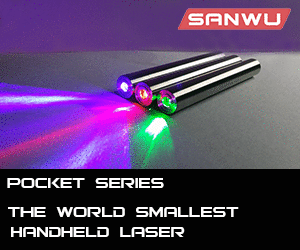LASER66
0
- Joined
- Mar 8, 2008
- Messages
- 223
- Points
- 18
Thorlabs has higher prices than typical retail/ wholesale. It's done due to the nature of their catalog, convenience. This is well know, and I am not knocking them.
I know the owner, and several employees. I started working with them when it was just 15 employees; circa 1992. Now Thorlabs owns about 15 companies!
I have not bought many Nichia diodes for customers, as I don't get much if any discount. They are not set up with a formal distributor network. Everyone must go to Japan, and no diodes stock other than there, except a few places like Thorlabs. See the reason for high prices!
I actually need to check pricing on 488nm for a customer, so if Thorlabs has it for nearly $4K, I'll bet they are about $2K USD.
@ piferal...
The wafers have multiple diodes on them, and all should be the same. Well in the real world, the wavelengths and other parameters are no so fixed. Variations in production make for a bell shaped curve as far as wavelength, operating and threshold current, etc. Since the wafer if sliced, with individual diode chips or dies being cleaved, variations on divergence angles, etc can occur. Then there is the mechanical mounting of the diode on the sub- mount, etc.- all play into variations. So the manufacturer has a batch of diodes with various, but limited output parameters. They sort the diodes into what is called Bins, and you can choose diodes from a number a bins thay may have at any one time. If a trend is seen by a manufacture that a set of clients want higher wavelengths, say 520nm for example, they will act on this. Should they have their 510nm diodes sit and not get back their investment into production? No. They will sell 510 nm diodes, maybe cheaper, and then ask if you want the delux model at 510nm. Hey if you are a customer with big pockets- take to 520nm diodes at a premium price. So bins may also be set up for pricing, customer types, etc.
There are very, very few customer who have diodes made specifically to their own specifications.
I know the owner, and several employees. I started working with them when it was just 15 employees; circa 1992. Now Thorlabs owns about 15 companies!
I have not bought many Nichia diodes for customers, as I don't get much if any discount. They are not set up with a formal distributor network. Everyone must go to Japan, and no diodes stock other than there, except a few places like Thorlabs. See the reason for high prices!
I actually need to check pricing on 488nm for a customer, so if Thorlabs has it for nearly $4K, I'll bet they are about $2K USD.
@ piferal...
The wafers have multiple diodes on them, and all should be the same. Well in the real world, the wavelengths and other parameters are no so fixed. Variations in production make for a bell shaped curve as far as wavelength, operating and threshold current, etc. Since the wafer if sliced, with individual diode chips or dies being cleaved, variations on divergence angles, etc can occur. Then there is the mechanical mounting of the diode on the sub- mount, etc.- all play into variations. So the manufacturer has a batch of diodes with various, but limited output parameters. They sort the diodes into what is called Bins, and you can choose diodes from a number a bins thay may have at any one time. If a trend is seen by a manufacture that a set of clients want higher wavelengths, say 520nm for example, they will act on this. Should they have their 510nm diodes sit and not get back their investment into production? No. They will sell 510 nm diodes, maybe cheaper, and then ask if you want the delux model at 510nm. Hey if you are a customer with big pockets- take to 520nm diodes at a premium price. So bins may also be set up for pricing, customer types, etc.
There are very, very few customer who have diodes made specifically to their own specifications.
Last edited:



